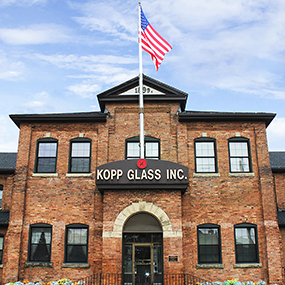The transition to light emitting diodes (LEDs) from conventional light sources brings several new challenges to lighting engineers and designers. LEDs are much different than incandescent bulbs, especially in terms of useful life. It’s easy to determine the useful life of an incandescent lamp; if the light goes out, its useful life is over. This is not the case with LEDs. The useful life of an LED is the time the LED remains within the desired specifications of the user. So, while the LED could still be emitting light, it may not still be meeting the target photometric or chromaticity requirements. In critical lighting applications, such as traffic and airfield lighting, shifts in light output and color can be dangerous if lighting signals are misidentified.
Emitting Life versus Useful Life
Incandescent light sources use a filament to generate visible and infrared light. As electricity passes through the filament the temperature increases, which causes the filament to act like a blackbody radiator. Over time, the tungsten filament evaporates and becomes brittle. Eventually, the filament breaks and prevents the bulb from emitting any more light.
LEDs do not fail suddenly like incandescent light sources. Instead, the light output of the LED will weaken as the materials it’s composed of degrade. Over time, the metal junctions, phosphors, and semiconductor material of an LED can deteriorate, and as a result, the luminous flux of an LED will decrease and the peak wavelength (color) can shift. Changes in temperature can also degrade the LED encapsulate, which may shift the color to appear more yellow.
LED manufacturers typically provide an emitting lifetime, which estimates when the LED will no longer emit. However, the useful life, which is shorter than the emitting lifetime estimate, is a more meaningful measure for product designers and end users. The useful life takes into account the decrease in light output and recognizes the point at which the LED is no longer suitable for use (in the application).
Based on research from the Alliance for Solid State Illumination Systems and Technologies (ASSIST), the useful lifetime expires (for most general lighting applications) when the luminous flux of the LED decreases to 70% of the initial luminous flux. This number is represented by Ln (n = % of total luminous flux). Therefore, in this case 70% of the flux is written as L70. Based on operating conditions the time when L70 is reached needs to be determined. Which yields the questions, how long is the useful life of an LED and how do you determine it?
Factors that may Impact LED Useful Life
An LED’s useful life is impacted by its operating conditions, especially the LED’s junction temperature and forward current. LED manufacturers provide specifications that show the light output vs. junction temperature. The higher the junction temperature, the lower the luminous flux.
The Lighting Research Center (LRC) has investigated methods to determine the useful life of LEDs. They’ve performed simulated junction temperature measurements and calculated an estimate useful life based on temperature and degradation due to heat. Their research demonstrates that the useful life of an LED is significantly affected by junction temperature.
An LED fixture installed at an airport on the Florida coast has different operating conditions than that same LED fixture in Chicago, Illinois. Environmental factors like humidity and moisture can deteriorate the LED components if allowed access to the interior of the fixture. High environmental temperatures will also increase the junction temperature and further degrade the LED. Since the operating conditions are different in each location, the fixtures will have different useful lifetimes. Failure to consider the environmental and operating conditions could result in lights shifting out of specification sooner than expected.
Consequences of Operating an LED Beyond its Useful Life
Operating an LED past its useful life will result in color shifting and/or a decrease in luminous flux. These LED characteristics begin to change within a few thousand hours of operation. Since the user defines the point at which the LED has shifted outside of acceptable characteristics, the importance of the shifting or output loss is dependent upon application.

The risk of light output shifting can be an important safety concern; especially for industries that have strict performance specifications, such as in airfield lighting. Signal and obstruction lighting provide visual guidance to pilots, pedestrians, and others who use the airfield. In adverse weather conditions with low visibility, these lights are critically important and ensure safe passage. The Federal Aviation Administration (FAA) has developed specifications to mitigate risks related to misidentification of signal or obstruction lighting. If the LEDs were to shift out of specification while being operated there could be major safety issues.
How to Determine LED Useful Life
It is impractical to measure the entire lifespan of an LED as a way to determine useful life. Measuring the LED over its lifetime of 25,000 to 100,000 hours could take anywhere from 2 to 11 years to complete and the technology would most likely be obsolete by the time a result was obtained. However, performing calculations based on LED characteristics can be a valid approach to estimating useful life.
IES LM-80-15
Members of the Illuminating Engineering Society (IES) created an industry standard for measuring lumen depreciation called LM-80. However, it is not a method for estimating the lumen life or reliability of the LED system. The peak wavelength shift and anticipated lumen depreciation are unique to the LED’s operating environment. LM-80 does not take into account the entire luminaire system and certain environmental factors. It provides an outline for measuring LED characteristics over a few thousand hours but does not predict the LED lifetime past the measurement period.
IES TM-21-11
IES also produced another industry standard, TM-21, which suggests extrapolating measured data (collected per LM-80 procedures) from 6,000 hours outward to 25,000 hours or more. This document also suggests experimental calculations that take into account environmental conditions which degrade the LED. However, these methods have not been proven to yield consistent results due to the impact of environmental and other external factors.
Proposed Calculation and Measurement Procedure to Determine Useful Life:
Manual inspection of the luminaire is the only guaranteed method to ensure that the lighting fixture is meeting the required specifications, but it’s not practical to manually inspect every light fixture on the airfield. However, useful life could be estimated by first calculating the lumen depreciation based on LM-80 and TM-21 and then validating and refining your calculations with manual inspection. Outlined below is basic framework for conducting these tests and calculations.
- Perform calculations based on TM-21 to estimate useful life (N hours)
- Conduct field testing using a spectoradiometer and photometer
A. Initial measurement
B. Periodic measure every few thousand hours
C. Measurement at N hours - Use field information for validation
A. Validate or refine TM-21 estimation - Determine environmental effects based on measurement and estimation difference
- Update estimation
- Determine useful life based on the updated estimation
- Validate through field testing of multiple fixtures of the same design and environment
By using both estimation of LED degradation based on temperature and manual inspection of the results in the field, a better statistical representation of LED useful life in operating conditions could be understood. The combination of these methods will yield results that provide for improved estimations for future LED fixtures in similar conditions. While this approach may seem burdensome, there aren’t many other practical solutions to determine useful life for luminaries operating in the field.
Design with Thermal Management in Mind
When designing LED fixtures, proper thermal management is one aspect of design that should be carefully considered. Often, engineers will select an LED and operate it at its maximum driving current; this can create excessive heat that will shorten the LED’s useful life. Typically, heat sinking is used to dissipate the heat produced by the LED system; however there are other ways to reduce heat in the system.
Proper LED selection, array design, and secondary optics can be used to reduce heat in the luminaire and improve the system’s efficiency, while still achieving the required output. By designing with these considerations in mind, the junction temperature can be managed more effectively, which will help extend the LED’s useful life. We’ll discuss these design considerations in more detail in an upcoming article.


